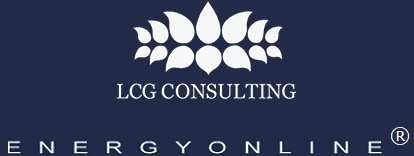|
News
|
LCG, December 18, 2025--RWE and Indiana Michigan Power Company (I&M), an American Electric Power (AEP) company, today announced their partnering to provide new wind power generation capacity online to meet Indiana’s growing electricity demand. The companies signed a 15-year power purchase agreement (PPA) for the total output from RWE’s 200 MW Prairie Creek wind project in Blackford County, Indiana. I&M will purchase electricity from the wind project, which will further diversify its portfolio and be consistent with its all-of-the-above strategy to secure generation for its rapidly growing electricity demand.
Read more
|
|
LCG, December 16, 2025--The Nuclear Regulatory Commission (NRC) announced today that it has renewed the operating licenses of Constellation LLC’s Clinton Unit 1 in Clinton, Illinois, and Dresden Units 2 and 3, near Morris, Illinois, for an additional 20 years beyond the current expiration dates. The combined capacity of these three, Illinois-based nuclear units is 2,925 MW, and the operating license extension will enable the units to generate carbon-free power through about 2050.
Read more
|
|
|
Industry News
Clear Skies Act of 2005 Introduced
LCG, January 25, 2005--The Clear Skies Act of 2005 was introduced on Monday by Senators James Inhofe (R-Oklahoma) and George Voinovich (Republican-Ohio). The goal of the new legislation is to reduce emissions from power plants through cap and trade programs for sulfur dioxide (SO2), nitrogen oxides (NOx), and mercury. A hearing on the legislation is planned for January 26 by Senator Voinovich, the chairman of the Senate subcommittee on Clean Air, Climate Change, and Nuclear Safety.The proposal would use the existing Acid Rain Trading Program, which employs a cap and trade design, and add new provisions for mercury emissions. With the cap and trade design, the government sets the cap or limit on the number of tons of pollutants that can be emitted in a region, and emission allowances can then be traded. Those companies with relatively low-cost, pollution control upgrade alternatives at their power plants will install equipment to reduce emissions and can then sell allowances to others, resulting in reduced overall emissions. For SO2, The Clear Skies Act would adhere to the current caps through 2009 and reduce the cap to 4.5 million tons per year in 2010. The cap would then be reduced to 3 million tons in 2019.With respect to NOx, the Clear Skies Act would create a new NOx emissions cap in 2008 of 1.562 million tons per year for most of the midwest and eastern region of the United States. The cap would be reduced to 1.162 million tons per year in 2019. A new western NOx trading region would also be created, with a cap of 538,000 tons per year, commencing in 2019.For the first time, a mercury cap and trade program would be employed. The mercury cap would begin in 2010 at a limit of 34 tons per year and drop to 15 tons commencing in 2019.
|
|
|
|
UPLAN-NPM
The Locational Marginal Price Model (LMP) Network Power Model
|
|
|
UPLAN-ACE
Day Ahead and Real Time Market Simulation
|
|
|
UPLAN-G
The Gas Procurement and Competitive Analysis System
|
|
|
PLATO
Database of Plants, Loads, Assets, Transmission...
|
|
|
|
|
